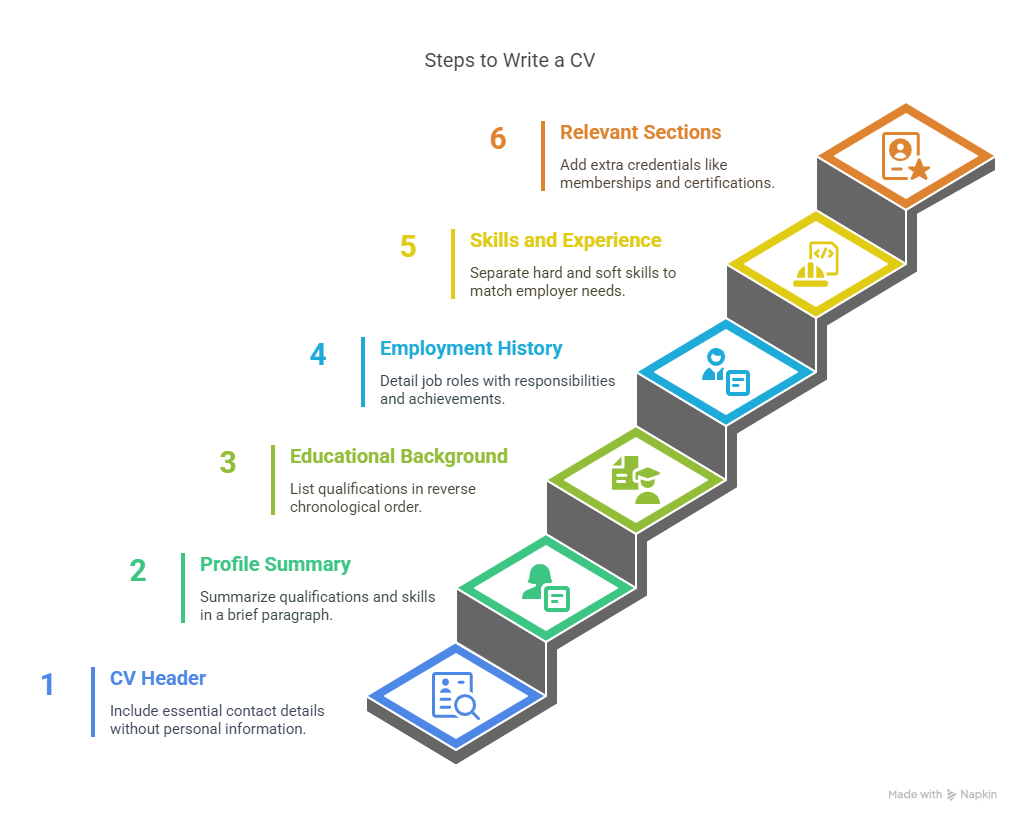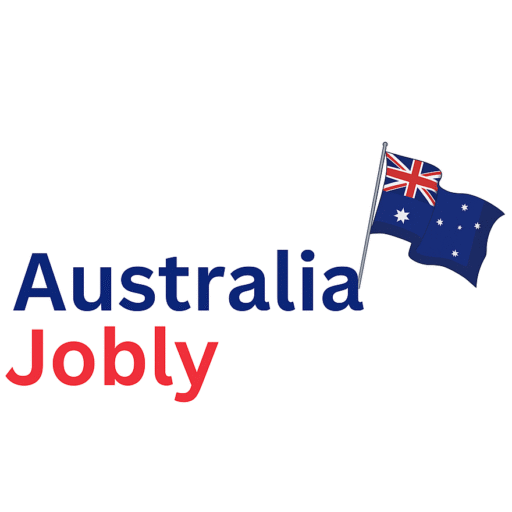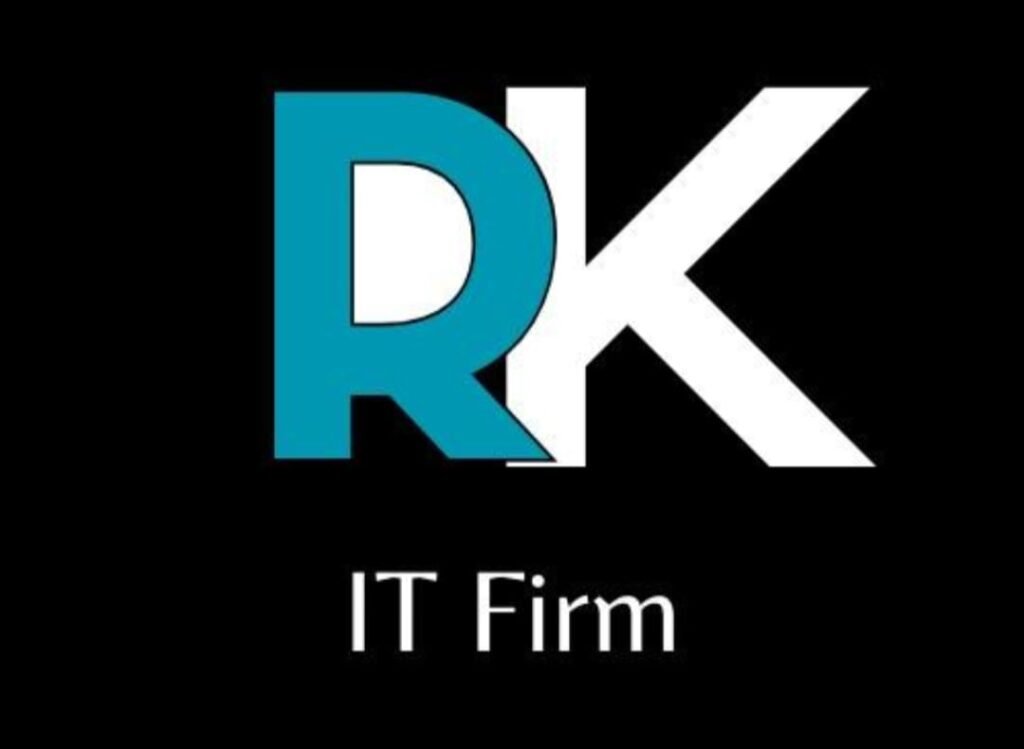Why Australian CVs Require a Specific Approach
Creating a compelling and job-winning CV is essential for anyone aiming to secure employment in Australia. Whether you’re a local graduate or an international applicant, understanding the right resume format Australia expects is crucial. Employers and recruiters follow specific expectations regarding layout, length, and tone. Learning how to prepare a CV in Australia will improve your visibility in applicant tracking systems and increase your chances of interview selection.
| Step | Key Element | Why It Matters |
| 1 | Use Australian English | Aligns with local standards and avoids spelling mismatches |
| 2 | Include only essential contact information | Ensures privacy and meets legal standards |
| 3 | Use a professional summary or objective | Helps capture attention early |
| 4 | Follow a clear section structure | Boosts readability and ATS compatibility |
| 5 | Avoid photos unless requested | Maintains compliance with anti-discrimination laws |
Understanding the Resume vs CV in Australia Debate
In Australia, the terms resume vs CV Australia are used interchangeably. While other countries differentiate between the two, in the Australian context, both terms refer to the same document. However, it’s important to remember that length and format may still vary depending on your experience level. A cv for graduate jobs may be just two pages long, while a professional’s cv template Australia may extend to three or more pages.
How to Write a CV Step by Step
Learning how to write a cv step by step begins with building a logical structure and including the most relevant details that match the role. Follow these core sections:
1. CV Header Layout and Contact Information
Include your full name, mobile number, email, and location. Keep it clean. Do not include age, marital status, religion, or nationality. This aligns with Australian employment laws.
2. Professional Profile Summary
This is a brief 3–5 sentence paragraph summarising your qualifications, experience, and skills. The career objective Australia format works well for entry-level job seekers, while experienced professionals can opt for a more results-driven resume summary.
3. Educational Background Section
List your qualifications in reverse chronological order, including the course name, institution, city, and year completed. You can omit high school details if you have a degree.

4. Employment History Formatting
Clearly outline job roles in reverse order. For each position, include:
- Job title
- Company name and location
- Dates of employment
- 3–5 bullet points describing your job duties, responsibilities, and quantifiable achievements
5. Skills and Experience
Separate soft skills and hard skills into a bullet list. Hard skills might include data analysis or proficiency in engineering tools. Soft skills could involve team leadership or attention to detail. This helps show alignment between your skills and experience and the employer’s needs.
6. Relevant Sections
If you have extra credentials, create sections for:
- Professional memberships resume content
- Certifications and licenses
- Awards or publications
- Volunteer work inclusion (if applicable)
Formatting Your Resume for ATS and Recruiters
Australian employers often use applicant tracking systems (ATS) to filter resumes. To ensure an ats-friendly resume Australia, consider the following:
- Use standard headings like “Experience” and “Education”
- Avoid tables or text boxes
- Submit your resume in Word or PDF as required (cv file formatting standards)
- Tailor each CV to the role, using cv keywords for ats
Best Practices for Job Seekers in Australia
Tailoring your CV for local expectations ensures greater success in job applications. Follow these additional resume writing tips:
- Use Australian spelling (e.g. organise instead of organize)
- Be concise but informative
- Don’t go more than 10 years back in work history unless relevant
- Use bullet points to improve cv readability tips
- Save a master template to adapt for each job
What to Include in a CV for Australian Jobs
Your cv for australian jobs should be built on clarity, relevance, and local compliance. Here’s a summary of what every professional cv australia should include:
- Contact details (excluding personal information)
- Short professional profile or career objective Australia
- Education and relevant certifications
- Work experience with bullet points and quantifiable achievements
- Key skills and experience
- Optional: volunteer work inclusion, references, or digital portfolios
Common Mistakes in Resume Writing Australia
Even a well-qualified candidate can be overlooked if the CV is not structured correctly. Avoid these common cv formatting mistakes:
- Including personal details like age or marital status
- Using overseas terminology or formatting
- Writing in non-Australian English
- Including unrelated hobbies or outdated information
CV for Skilled Migration and Sponsorship Jobs
Those applying under cv for skilled migration categories or seeking resume for sponsorship visa roles must be particularly detail-oriented. Include:
- Relevant experience matching the skilled occupation list
- Clear evidence of duties performed in those roles
- Qualifications accredited or recognised in Australia
- Mention if you’re open to relocation or remote roles
LinkedIn Profile Australia and Digital Portfolios
A well-prepared CV should align with your LinkedIn profile Australia. Employers often cross-check the two. You may also include digital portfolio links to showcase design, writing, or coding work relevant to the job.
Tailoring Your CV for Part-Time and Remote Jobs
If you are applying for casual, part-time, or remote roles, consider the following:
- Use a tailored cv layout for part-time jobs that focuses on availability
- Mention experience with remote tools if relevant
- Address your adaptability and independent work ethic
How to Write a Remote Job CV
When exploring how to prepare a CV in Australia for remote job opportunities, it’s essential to highlight skills and experience specific to virtual work environments. Employers hiring for remote roles look for candidates who are self-driven, organised, and tech-savvy. Your CV should clearly mention digital tools you’ve successfully used such as Zoom, Slack, Trello, Microsoft Teams, or Asana-to showcase your ability to communicate and collaborate remotely. Emphasise achievements where you managed tasks independently, met deadlines without supervision, or worked across different time zones. Include keywords like “remote communication,” “virtual collaboration,” and “self-management” throughout your work history and skills section. This not only aligns your CV with applicant tracking systems (ATS) but also demonstrates that you’re well-prepared for the demands of remote work in the modern Australian job market.
Certifications and Licenses Matter
When considering how to prepare a CV in Australia, it’s crucial to highlight any relevant certifications or trade licenses, especially if you’re applying for roles in regulated industries such as healthcare, engineering, IT, or education. Australian employers and recruiters place strong emphasis on formally recognised qualifications to ensure candidates meet local compliance and industry standards. Your certifications ,whether it’s a nursing registration, electrician’s license, cybersecurity accreditation, or teaching certification – should be listed in a dedicated section near the top or immediately after your professional summary. Include the full name of the qualification, the issuing body, and the date of issue or renewal. This not only demonstrates your readiness for the role but also helps your CV pass through applicant tracking systems that scan for essential credentials when shortlisting candidates.
Include Student CV Examples for No Experience
If you’re a student wondering how to prepare a CV in Australia with no formal work experience, the key is to focus on transferable skills and academic achievements. Start by listing relevant coursework, university projects, volunteer work, or part-time roles that demonstrate responsibility, initiative, or reliability. For example, mention group assignments that required teamwork, presentations that developed communication skills, or part-time customer service roles that taught time management. Even if the experience isn’t directly related to the job you’re applying for, highlighting soft skills such as problem-solving, adaptability, and collaboration can strongly position you as a capable and motivated candidate. Australian employers value initiative and a willingness to learn, so be sure to tailor each CV to the role and include action verbs to reflect your involvement.
Use CV Keywords That Match the Job Posting
A key tip when learning how to prepare a CV in Australia is to tailor your content using keywords that match the specific job posting. Carefully read each job advertisement and identify recurring terms, role-specific language, and required skills. Where relevant, incorporate those exact phrases into your CV–particularly in the professional summary, skills, and work experience sections. This strategy not only helps your application pass through applicant tracking systems (ATS), which scan for keyword matches, but also signals to recruiters that you understand the role and its expectations. For example, if a job listing repeatedly mentions “customer engagement” or “data reporting,” be sure to reflect those terms in your own descriptions. Customising your CV with job-matching language significantly increases your chances of being shortlisted for interviews in the competitive Australian job market.

Volunteer Work Adds Value
When considering how to prepare a CV in Australia, it’s important not to overlook the value of volunteer work-especially if you’re early in your career or transitioning industries. Even if the volunteer experience isn’t directly related to the job you’re applying for, it still reflects positively on your work ethic, sense of responsibility, and willingness to contribute to a team. Roles in community programs, charity events, school functions, or local organisations can demonstrate key soft skills like communication, reliability, leadership, and time management. Including a dedicated section for volunteer work shows Australian employers that you’re proactive and committed to personal development, traits highly valued across most industries. Whether you’re applying for part-time, full-time, or entry-level roles, showcasing volunteer work adds depth to your CV and helps create a well-rounded applicant profile.
Avoid Buzzwords or Overused Phrases
When learning how to prepare a CV in Australia, it’s essential to avoid common buzzwords and overused phrases that add little real value to your application. Terms like “hard-working,” “go-getter,” “team player,” or “results-driven” are often seen as vague and lack substance unless supported by specific examples. Instead of relying on clichés, focus on measurable outcomes and real-life actions. For instance, rather than saying you’re a “strong communicator,” highlight a situation where you led a successful presentation or resolved a customer issue effectively. Employers in Australia value clarity and authenticity, so it’s better to use direct language and back up your strengths with achievements, data, or specific experiences. This approach not only improves credibility but also sets your CV apart in a competitive job market.
Be Consistent with CV File Formatting
An often-overlooked step in how to prepare a CV in Australia is ensuring consistency in file formatting. After writing your CV, it’s best practice to save it in both Word (.docx) and PDF formats, as different employers and recruitment agencies may specify preferred file types. When converting from Word to PDF, double-check that your fonts, spacing, margins, and bullet points remain intact across both versions. Inconsistent formatting can make your CV look unprofessional or disorganised, potentially affecting first impressions. Choose clean, readable fonts like Arial or Calibri, maintain uniform font sizes for headings and body text, and align all elements properly. Presenting a well-formatted, error-free CV shows attention to detail-an essential quality that Australian employers value across all industries.
Include References Thoughtfully
When learning how to prepare a CV in Australia, it’s important to include references in a thoughtful and professional manner. Rather than using the outdated phrase “references available upon request,” it’s often more effective to list one or two actual references especially if you have the space and they’re relevant to the job. Each reference should include the person’s full name, job title, company name, phone number, and professional email address. Make sure you ask for their permission before including them on your CV to ensure they’re prepared to speak positively about your work. Providing verified references up front demonstrates transparency and readiness, two traits that are highly regarded by Australian employers. Including references from past supervisors, academic mentors, or team leaders can strengthen your credibility and help your application stand out.
Sample CV Template for Australian Format
[Full Name]
[Phone Number] | [Email Address] | [Location (City, State)]
Professional Summary
3–5 line paragraph summarising skills, experience, and goals
Education
Degree Title, Institution, City | Year Completed
Certifications or licenses
Work Experience
Job Title, Employer, City | Start Date – End Date
- Achievement or responsibility 1
- Achievement or responsibility 2
- Achievement or responsibility 3
Skills
- Skill 1
- Skill 2
- Skill 3
Additional Sections
Certifications, Languages, Projects, Awards, Volunteer Work Inclusion, References
Conclusion:
Mastering how to prepare a CV in Australia involves more than just listing your past jobs-it requires aligning with local employer expectations, presenting your information with clarity, and showcasing your genuine skills and experience. Australian recruiters value concise, well-structured resumes that are tailored to the specific role you’re applying for. Whether you’re a school leaver, graduate, career changer, or returning to the workforce, a professionally written CV tailored to the job market is essential to stand out. This includes using the right format, highlighting measurable achievements, and integrating role-specific keywords that perform well in both human reviews and applicant tracking systems (ATS). By following this comprehensive CV writing guide Australia, you can craft a document that reflects your strengths, aligns with industry standards, and improves your chances of landing interviews. With a focused and high-quality CV, your next career opportunity could be just one application away.
Frequently Asked Questions (FAQs)
How long should my Australian CV be?
Generally, 2–3 pages are acceptable. If you’re a senior professional, 4 pages may be suitable as long as the content remains relevant.
Do I need to include a photo in my CV for Australia?
No, unless the employer explicitly requests it. Photos are not a standard requirement and may violate anti-discrimination laws.
Should I write a resume or CV for jobs in Australia?
Both terms are used interchangeably in Australia. Focus more on quality and structure than the label.
What file format should I use for submitting my CV?
Always check the employer’s preference, but generally, both PDF and DOCX formats are accepted. Avoid image files or non-editable formats.
What’s the best way to describe my past job duties?
Use action verbs and include metrics. For example, “Managed a team of five” or “Reduced operational costs by 20%.”
Can I include part-time or freelance work in my CV?
Yes. Highlight your achievements and transferable skills even if the work was not full-time.
What is an ATS-friendly resume in Australia?
It’s a CV designed for applicant tracking systems. Use clear headings, standard fonts, and avoid graphics or tables.
Should I mention references in my CV?
Yes, but only if space allows. Otherwise, use “available upon request” and have references ready.
What if I have no job experience?
Focus on education, projects, volunteer work, and transferable skills. Use a student cv no experience australia template.
Is it necessary to adapt my CV according to new job?
Absolutely. Tailoring improves both ATS scoring and recruiter relevance. Highlight how your skills meet the job description directly.




